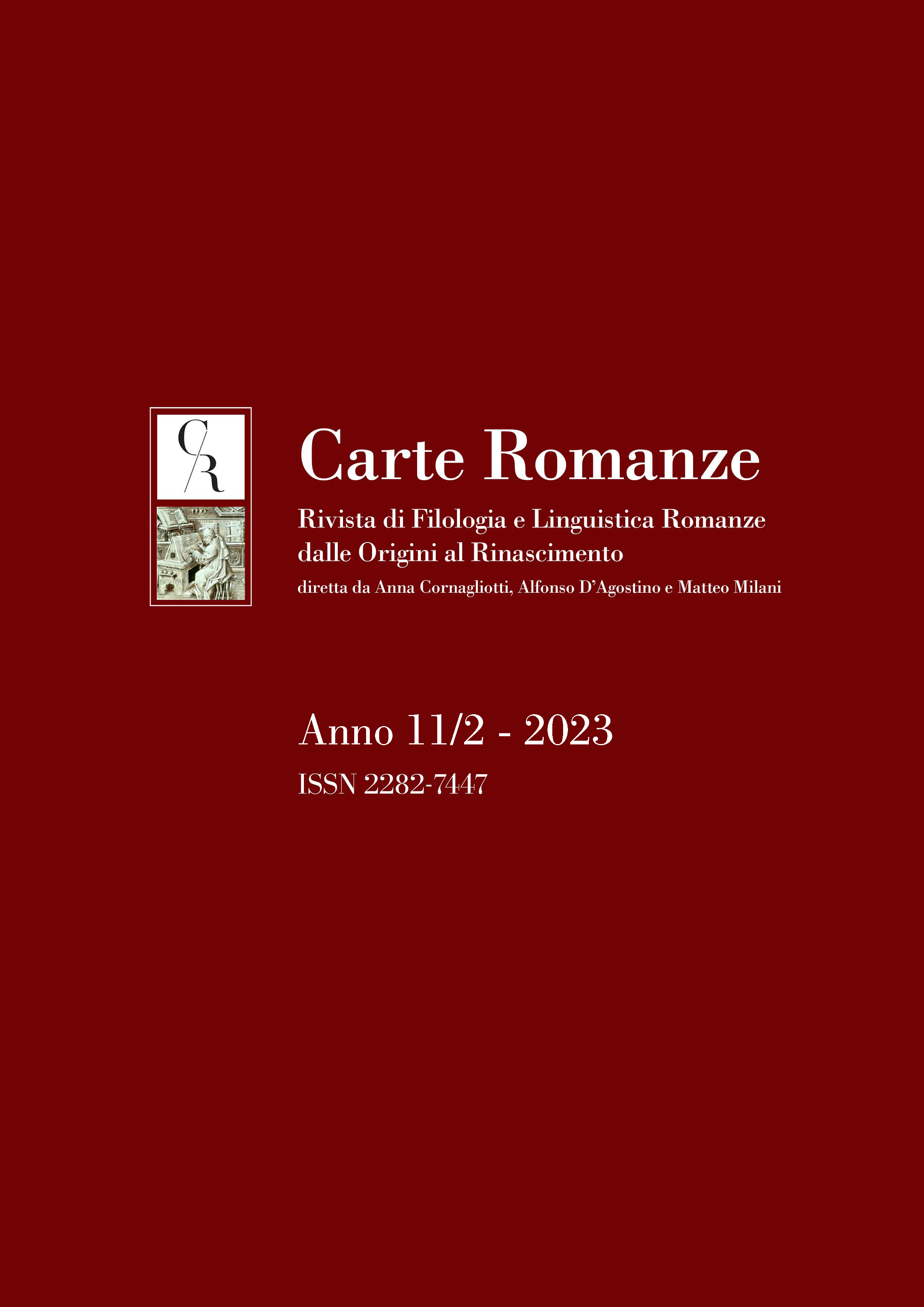Novelle italiane antiche nella tradizione manoscritta: contenuto, struttura e genealogia del cod. Firenze, BNCF II III 343
Main Article Content
Abstract
A rich corpus of Italian novelle is transmitted by a few codexes from the 14th to the 16th century, including the first printed edition published in 1525 under the apocryphal title of Le cento novelle antiche (The One Hundred Ancient Tales, namely the Vulgate Novellino), but they differ from each other in order and number of pieces. The article mainly focuses on the ms. II III 343 of the National Central Library of Florence, containing a series of Vite di filosofi (Lives of Eminent Philosophers), about fifty novelle of the Novellino and ten more short stories not attested elsewhere. The importance of this narrative collection from the 15th century is highlighted here: the ms. contains the fragment of an early version of the Novellino, but is also a remarkable anthology that assembles different collections composed by different authors and collected by the same copyst. The comparison of its sections with each other, and with the other codexes that partially share the corpus, spreads light on the laboratory of the novella, on some aspects of its written circulation in the first centuries, its definition and its developments since the ancient Libro di novelle e di bel parlar gentile (Book of Tales and of Lovely Gentle Speech) or Ur-Novellino.
Article Details

This work is licensed under a Creative Commons Attribution-NonCommercial-NoDerivatives 4.0 International License.
Carte Romanze si serve di una licenza  Creative Commons. Attraverso la licenza CC-BY-NC-ND gli autori conservano tutti i diritti economici e concedono alla rivista il diritto non esclusivo di pubblicazione, permettendo a chiunque di scaricare il contributo, di leggerlo e stamparlo. Ogni riuso deve prevedere la citazione virgolettata (o comunque riconoscibile), garantendo all’autore la proprietà intellettuale di quanto citato, e segnalando sempre e comunque la rivista come fonte (con l’indicazione dell’annata, del volume e delle pagine). Non è invece concessa a nessuno la modifica del contributo né il riuso per creare opere secondarie.
Creative Commons. Attraverso la licenza CC-BY-NC-ND gli autori conservano tutti i diritti economici e concedono alla rivista il diritto non esclusivo di pubblicazione, permettendo a chiunque di scaricare il contributo, di leggerlo e stamparlo. Ogni riuso deve prevedere la citazione virgolettata (o comunque riconoscibile), garantendo all’autore la proprietà intellettuale di quanto citato, e segnalando sempre e comunque la rivista come fonte (con l’indicazione dell’annata, del volume e delle pagine). Non è invece concessa a nessuno la modifica del contributo né il riuso per creare opere secondarie.
Quando siano rispettate le indicazioni di cui sopra, non è necessario richiedere ulteriori permessi di utilizzazione del materiale né all’autore né al comitato scientifico.

